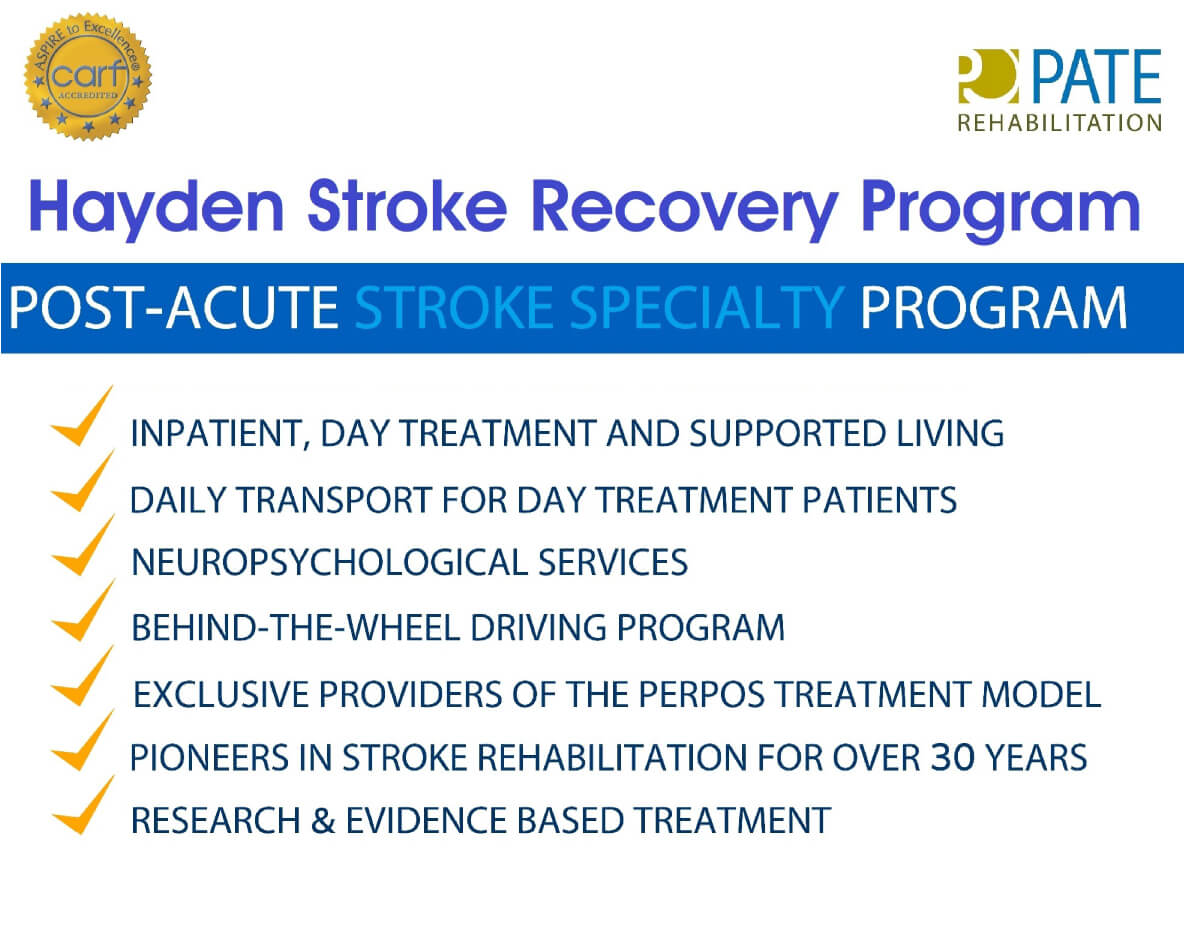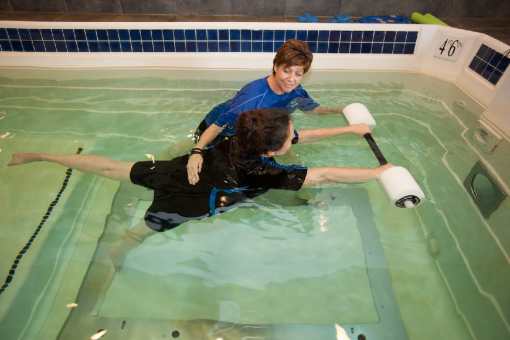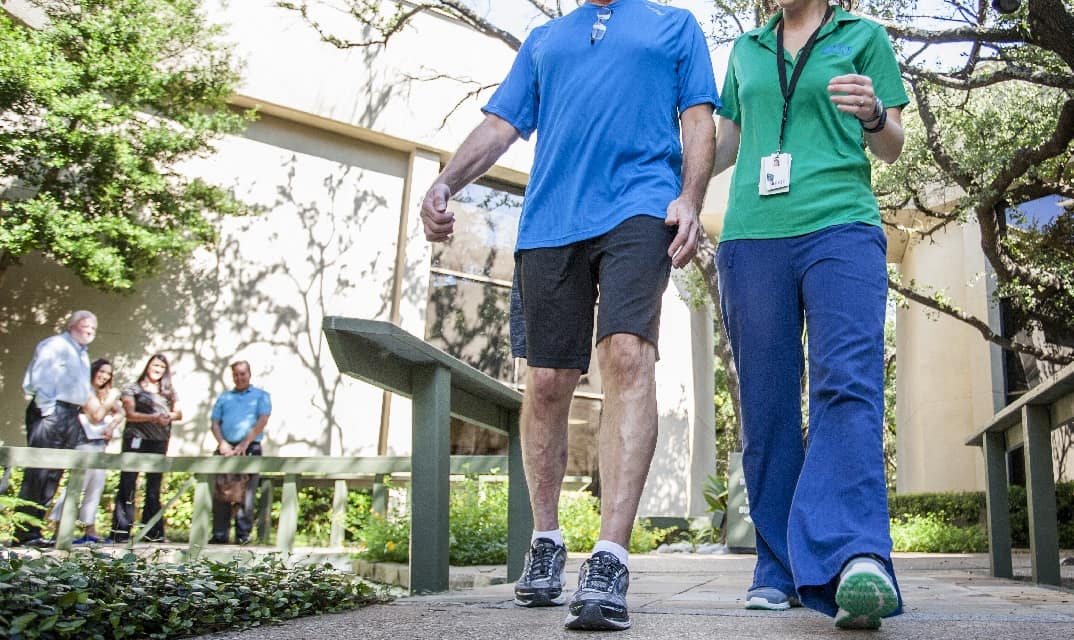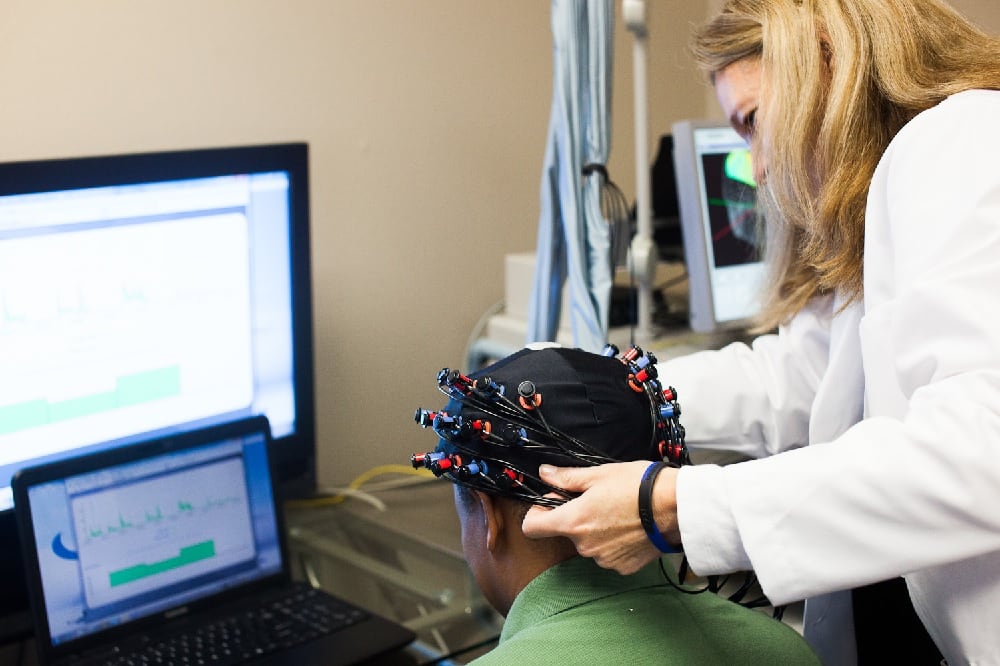Our Hayden Stroke Recovery Program has been an accredited stroke specialty program by CARF (Commission on Accreditation of Rehabilitation Facilities) for over ten years. We have been successfully treating patients with brain injuries for over 30 years.
Pate stroke rehabilitation is evidence-based for maximum results. Progress is a team effort led by experts who ensure your individualized treatment plan is on track and the right fit. As you change it does, too.
A significant factor for many people who choose Pate for their stroke rehabilitation is that we offer a full 6 hours of therapy a day. Most post-acute programs allow just 3-4 hours. That's an extra 10 hours a week. We know that time matters.
Our model is built on the knowledge that the more time you spend in rehab, the more results you're likely to get. Early and intensive intervention has proven to enhance long term outcomes and may help people avoid further stroke-related complications down the road.
Nearly a quarter of the nation's 800,000 annual strokes are stroke recurrences. To help patients adopt a healthy lifestyle, key to stroke prevention, our stroke recovery program includes multi-media stroke learning centers at each location.
Pate’s centers present educational stroke information in a comfortable, wheelchair-accessible environment. Often people have deficits resulting from their stroke that can impact their ability to learn in their usual style. The centers accommodate different learning abilities and preferences by using a variety of media, including movies and documentaries, books, online resources, videos and audio to teach people about stroke prevention.
In 2016, The American Heart Association and American Stroke Association (AHA/ASA) issued guidelines for the first time on rehabilitation after stroke, calling for intensive, multidisciplinary treatment - precisely what the Pate Specialty Stroke Program is designed to deliver. Download stroke guidelines PDF
Highly Trained Stroke Team Members
- Certified Stroke Rehabilitation Specialist
- Physiatrist
- Physical Therapist
- Occupational Therapist
- Certified Brain Injury Specialist
- Neuropsychologist
- Speech and Language Pathologist
- Certified Low Vision Therapist
- Certified Vital Stim Therapist
- Certified Rehabilitation Counselors
- Certified Vocational Evaluation Specialist
- Driving Rehabilitation Specialist
- Neurology Certified Therapist
- Certified Aquatics Therapist
Specialized Stroke Treatment Equipment
- Physical
- Armeo Spring Robotics
- Reo-Go Robotics
- NeuroMove
- Sanet Vision Integrator
- Vital Stim
- Estim Unit
- Rifton Gait Trainer
- Biodex Gait Trainer
- Bioness Upper/Lower Extremity Unit
- APT Attention Processing Therapy
- Aquatics
- LiteGait
- Constraint induced therapy
- Biofeedback
- fNIRS Spectroscopy
Stroke Treatment Continuum
Stroke recovery typically progresses in phases.
1. Acute Hospitalization
Emergency, neurosurgical and medical stabilization during the period immediately after a stroke.
2. Acute Hospital Rehabilitation
Once medically stable, stroke patients begin an intensive rehabilitation program at the hospital. Physicians, nurses and therapists prepare them for post-acute rehab or home.
3. Post Acute Stroke Rehabilitation
Post-acute treatment takes place in a specialized, comprehensive rehabilitation facility. This period focuses on long-term recovery. The goal is regaining the most functional independence possible with intensive therapy. Post acute rehab also helps people learn compensatory strategies for abilities that have permanently changed since the stroke or TBI.
Pate Stroke Rehabilitation Therapy and the ASA/AHA Guidelines
The Hayden Stroke Recovery Program is at the forefront of treatment and had already incorporated many of the organization's first-ever guidelines for stroke care.
These recommendations include:
- Expanding care of stroke into the chronic phase (post-acute) due to strong evidence that it is beneficial for outcomes
- Multi-disciplinary team is required
- Inpatient facilities specializing in aftercare
- Inpatient residential facilities produce better outcomes than nursing homes
- Inpatient residential facilities that provide at least 3 hours of therapy a day (Pate provides six)
- Intensive repetitive mobility exercises for all patients with gait issues for enhanced outcomes
- Engaging in cognitive activities in an enriched environment (therapeutic activities)
- Balance training programs
- Social contact through group exercises may be beneficial for patients with depression
- A formal neuropsychological examination may be helpful and must be sensitive to a wide range of abilities, especially the assessment of executive and attentional functions
- Non-drug therapy for cognitive impairment including memory
- Caregiver support with counseling and family/caregiver to be an integral component of stroke rehabilitation
- Community model - there's "growing recognition that functional outcomes can be improved or at least maintained in chronic stroke with community interventions"
- Treatment should be individualized, not one-size-fits-all
- The "combination of ESD (early supported discharge) and community rehabilitation reduced inpatient length of stay and hospital readmission rates and increased functional independence and the ability of patients to live at home and participate in the community




